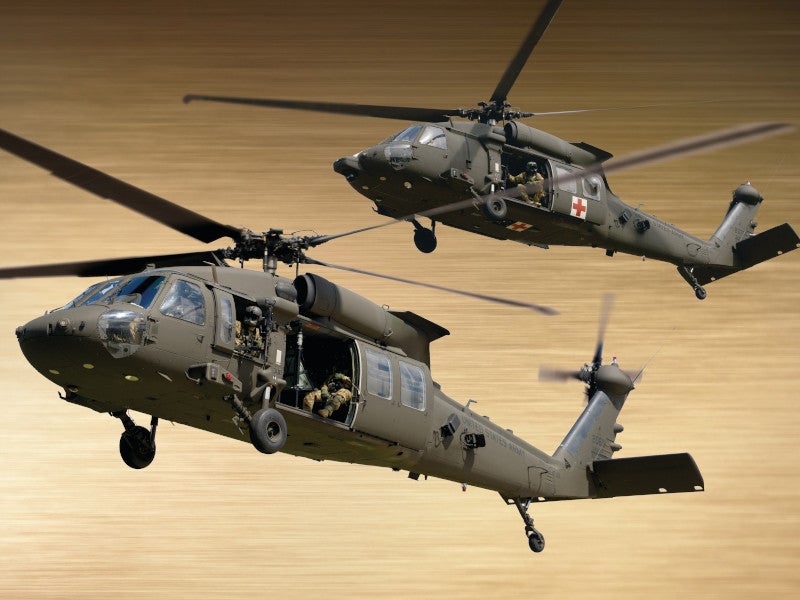Opening Peak Performance: UH 60 Helicopter Upkeep Guide
Opening Peak Performance: UH 60 Helicopter Upkeep Guide
Blog Article
Comprehending the Mechanics and Engineering Behind Uh 60 Helicopters
The UH-60 helicopter, commonly called the Black Hawk, stands as a peak of modern-day rotorcraft innovation, embodying a mix of durable design and detailed technicians. From its inception to its current models, the development of this aircraft showcases a fusion of innovation and functionality. As we peel back the layers of the UH-60's design, a world of intricate systems and meticulous engineering emerges. Understanding the mechanics and design behind this functional airplane reveals a world where accuracy meets power, and where each component plays a crucial role in achieving trip.
History of UH-60 Helicopters
The history of UH-60 helicopters traces back to the late 1970s when the USA Military sought a sophisticated and versatile utility helicopter to replace its aging fleet. In feedback to this requirement, the Sikorsky Airplane Company developed the UH-60 Black Hawk helicopter. Introduced in 1979, the UH-60 quickly became a staple in military operations as a result of its outstanding capabilities.
The UH-60 was made to succeed in a variety of objectives, including army transportation, medical emptying, digital warfare, and unique procedures. Its capability to adapt to different duties made it an important asset to the united state Army and other army pressures worldwide
For many years, the UH-60 platform has undergone several upgrades and variants to boost its performance and equal progressing mission demands. These helicopters have actually seen extensive service in conflicts such as the Gulf War, Afghanistan, and Iraq, showcasing their integrity and adaptability in diverse operational environments. The UH-60's abundant background is a testament to its long-lasting heritage as a premier energy helicopter.

Engine and Power Systems
Making use of innovative propulsion modern technology, UH-60 helicopters are furnished with innovative engine and power systems to ensure ideal efficiency and reliability in a variety of functional scenarios. The UH-60, frequently called the Black Hawk, is powered by two General Electric T700-GE-701D engines, each with the ability of supplying up to 1,940 shaft horsepower. These turboshaft engines offer the necessary thrust for the helicopter to perform its objectives successfully, including troop transportation, clinical emptying, and fight assistance.

Blades System and The Rules Of Aerodynamics
How do the rotor system and the rules of aerodynamics of UH-60 helicopters contribute to their functional effectiveness and trip capabilities? The blades system of the UH-60 helicopter plays an essential role in supplying lift and propulsion.
Aerodynamics also play an essential function in the efficiency of UH-60 helicopters. The structured fuselage and rotor blade style minimize drag, enabling the helicopter to achieve higher rates and better gas performance. The aerodynamic design of the UH-60 also adds to its click this ability to operate in diverse ecological conditions, including high elevations and hot temperature levels.
Avionics and Trip Control Systems

In its complex control with the rotor system and the rules of aerodynamics of UH-60 helicopters, the avionics and trip control systems develop a crucial network of innovations shaping the airplane's functional capacities. In the UH-60, these systems consist of electronic display screens, communication radios, GPS navigating, climate radar, and auto-pilot systems.
The trip control systems of the UH-60 are in charge of equating the pilot's inputs into the proper changes to the blades system, guaranteeing steady trip and ability to move. These systems contain hydraulic actuators, servos, and computer systems that function together to regulate the main and tail rotors, as well as other flight control surface areas. By specifically managing the helicopter's trip characteristics, these systems allow pilots to perform a variety of objectives, from transportation and search-and-rescue to fight procedures, with precision and self-confidence.
Function and Applications in Aviation
Avionics systems in UH-60 helicopters incorporate a variety of electronic systems that aid in navigating, interaction, tracking, and managing various airplane functions. These systems consist of digital displays, auto-pilot systems, interaction radios, General practitioner navigating tools, and climate radar. Furthermore, these systems integrate safety and security features such as auto-pilot settings, surface recognition alerting systems, and security augmentation systems to improve the general safety and security and operational capabilities of the UH-60 helicopters in numerous missions, including army transportation, medical discharge, search and rescue, and airborne firefighting.
Verdict
In verdict, the UH-60 helicopter is a versatile airplane with an abundant history and advanced design. Its engine and power systems, rotor system, aerodynamics, avionics, and flight control systems all function with each other to make it a trusted and effective machine.
In its complex control with the blades system and the rules of aerodynamics of UH-60 helicopters, the avionics and flight control systems form an essential network of Check This Out innovations shaping the airplane's functional capabilities.The flight control systems of the UH-60 are accountable for navigate to these guys equating the pilot's inputs right into the appropriate adjustments to the rotor system, ensuring secure flight and ability to move. Avionics systems in UH-60 helicopters encompass a range of digital systems that aid in navigating, interaction, monitoring, and regulating different airplane features. Furthermore, these systems include security functions such as autopilot settings, surface recognition alerting systems, and security augmentation systems to boost the overall safety and security and operational capacities of the UH-60 helicopters in numerous objectives, including troop transport, medical evacuation, search and rescue, and aerial firefighting.
Its engine and power systems, blades system, the rules of aerodynamics, avionics, and flight control systems all work together to make it a reliable and effective equipment.
Report this page